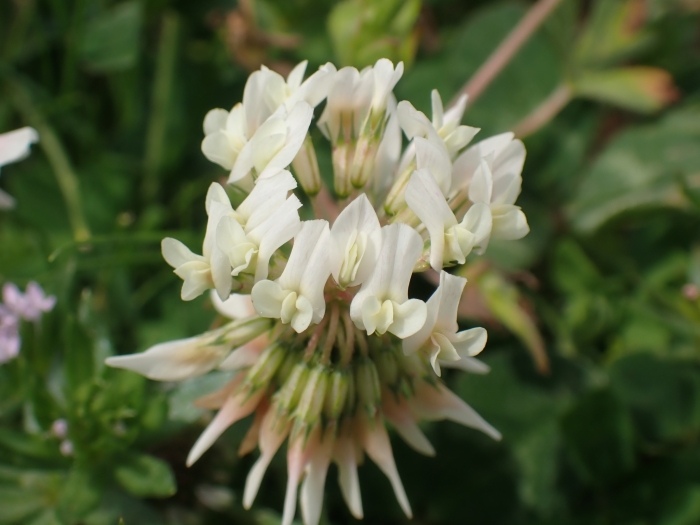White Clover
(Trifolium repens)
White Clover (Trifolium repens)
/
/

Cole Shoemaker
CC BY 4.0




















































Estimated Native Range
Summary
White Clover is valued for its ability to fix nitrogen in the soil, making it a key plant for improving soil fertility. It is commonly used in lawns, as a ground cover, and interplanted with pasture grasses and crops to enhance soil health. Its resilience to mowing and grazing makes it a popular choice for turf mixtures, especially in areas with poor soil. White Clover prefers clay soils but is adaptable to a range of soil types and pH levels. It requires full sun to part shade and moderate watering, with best performance in soils with medium to slow drainage. While it is a beneficial plant for ecological landscaping, it can become invasive outside its native range, spreading aggressively and outcompeting native flora.CC BY-SA 4.0
Plant Description
- Plant Type: Herb
- Height: 0.3-0.5 feet
- Width: 1-1.5 feet
- Growth Rate: Moderate
- Flower Color: White
- Flowering Season: Spring, Summer
- Leaf Retention: Evergreen
Growth Requirements
- Sun: Full Sun, Part Shade
- Water: Medium
- Drainage: Medium, Slow
Common Uses
Bank Stabilization, Bee Garden, Bird Garden, Butterfly Garden, Edible*Disclaimer: Easyscape's listed plant edibility is for informational use. Always verify the safety and proper identification of any plant before consumption., Erosion Control, Fire Resistant, Fragrant, Groundcover, Low Maintenance, Potted Plant, Rabbit Resistant, Rock Garden, Street Planting
Natural Habitat
Grasslands, meadows, and lawns across Europe, Central Asia, the Middle East, North Africa, East Africa, and the West Himalayas
Other Names
Common Names: Dutch Clover, White Dutch Clover, Ladino Clover, Ladino, Creeping White Clover, Wild White Clover, Trevolet De Prat, Hvid-Kløver, Weiss-Klee, Weißklee
Scientific Names: , Trifolium repens, Trifolium repens var. repens, Amoria repens, Trifolium repens f. repens, Trifolium humifusum,
GBIF Accepted Name: Trifolium repens L.